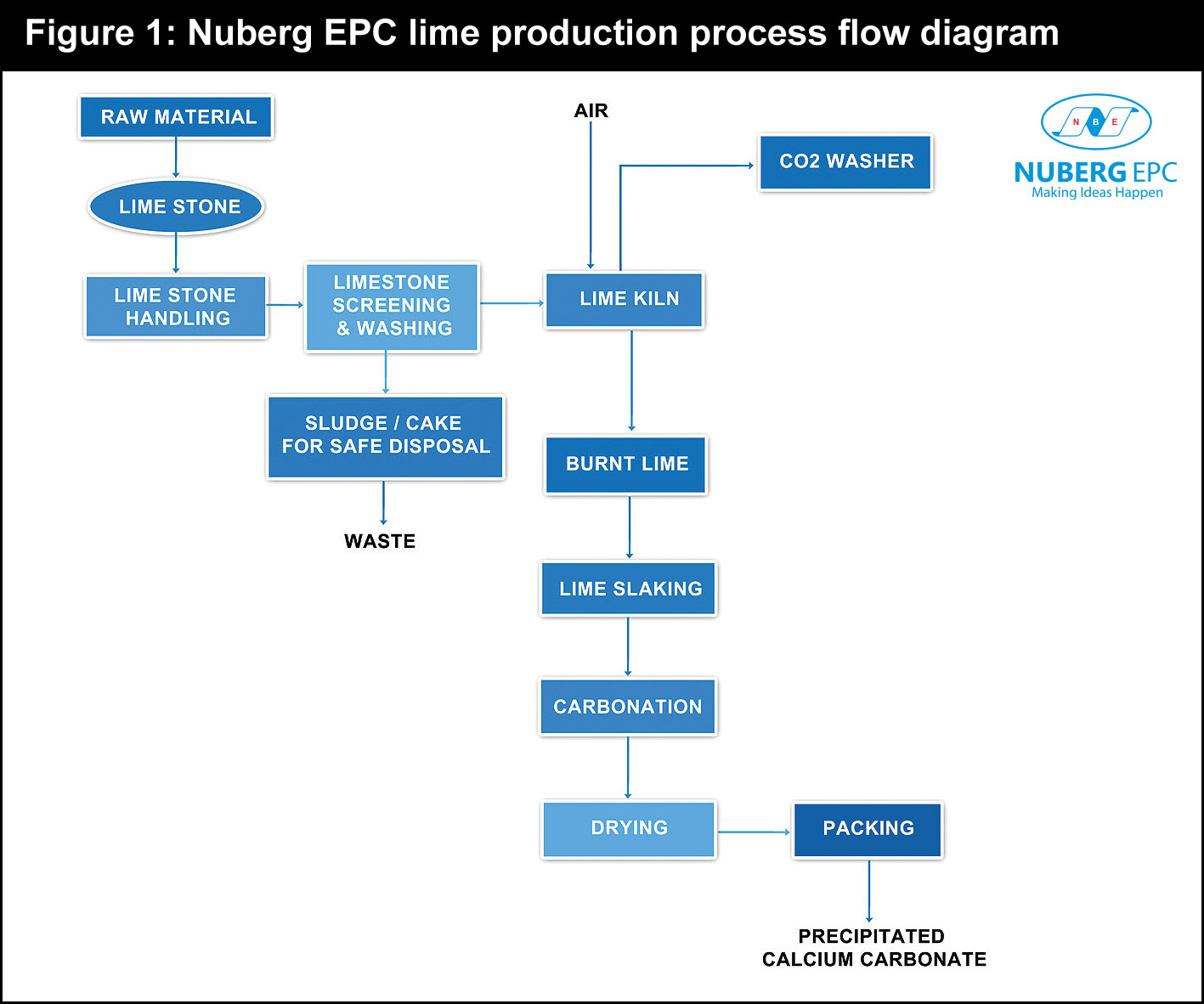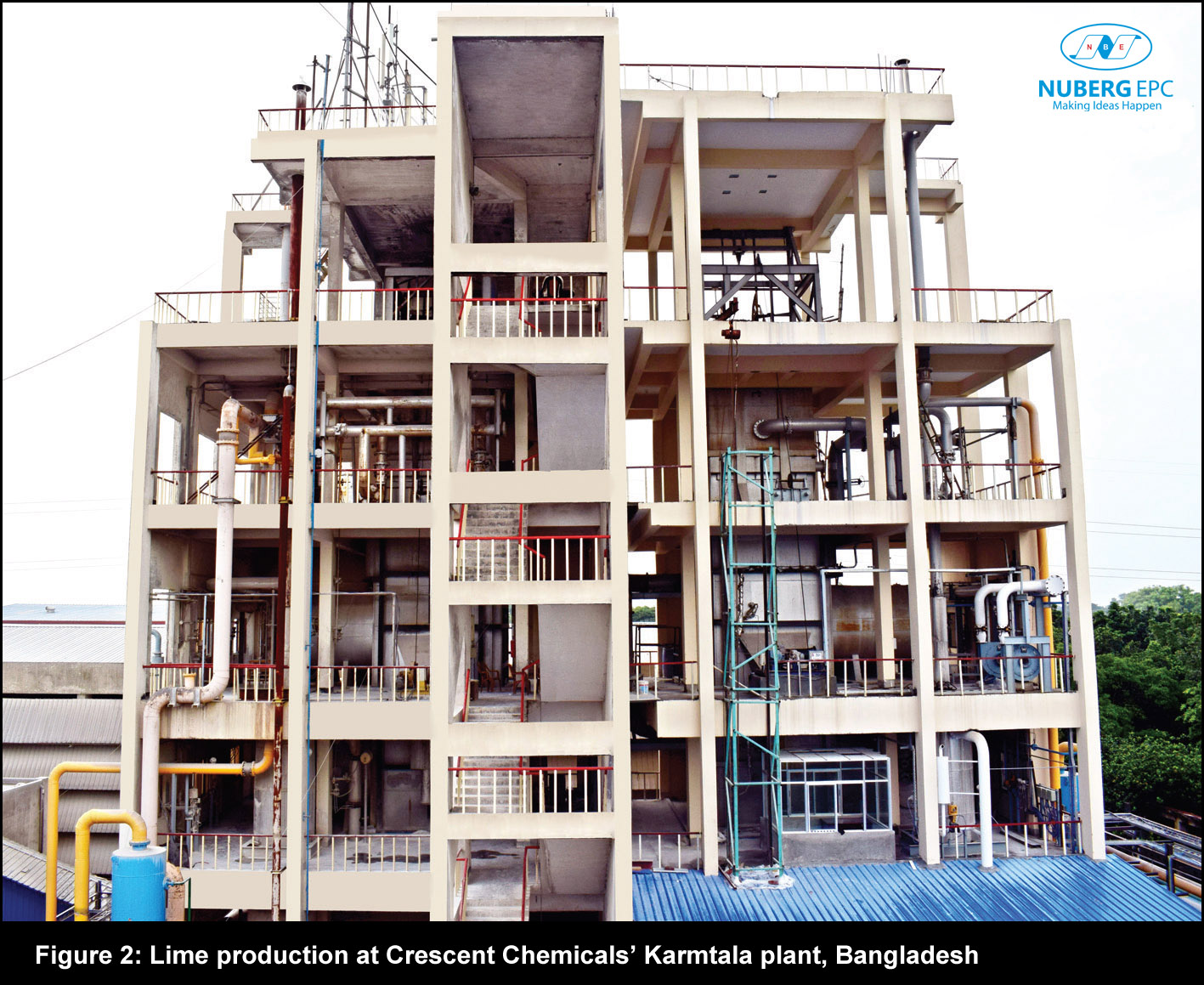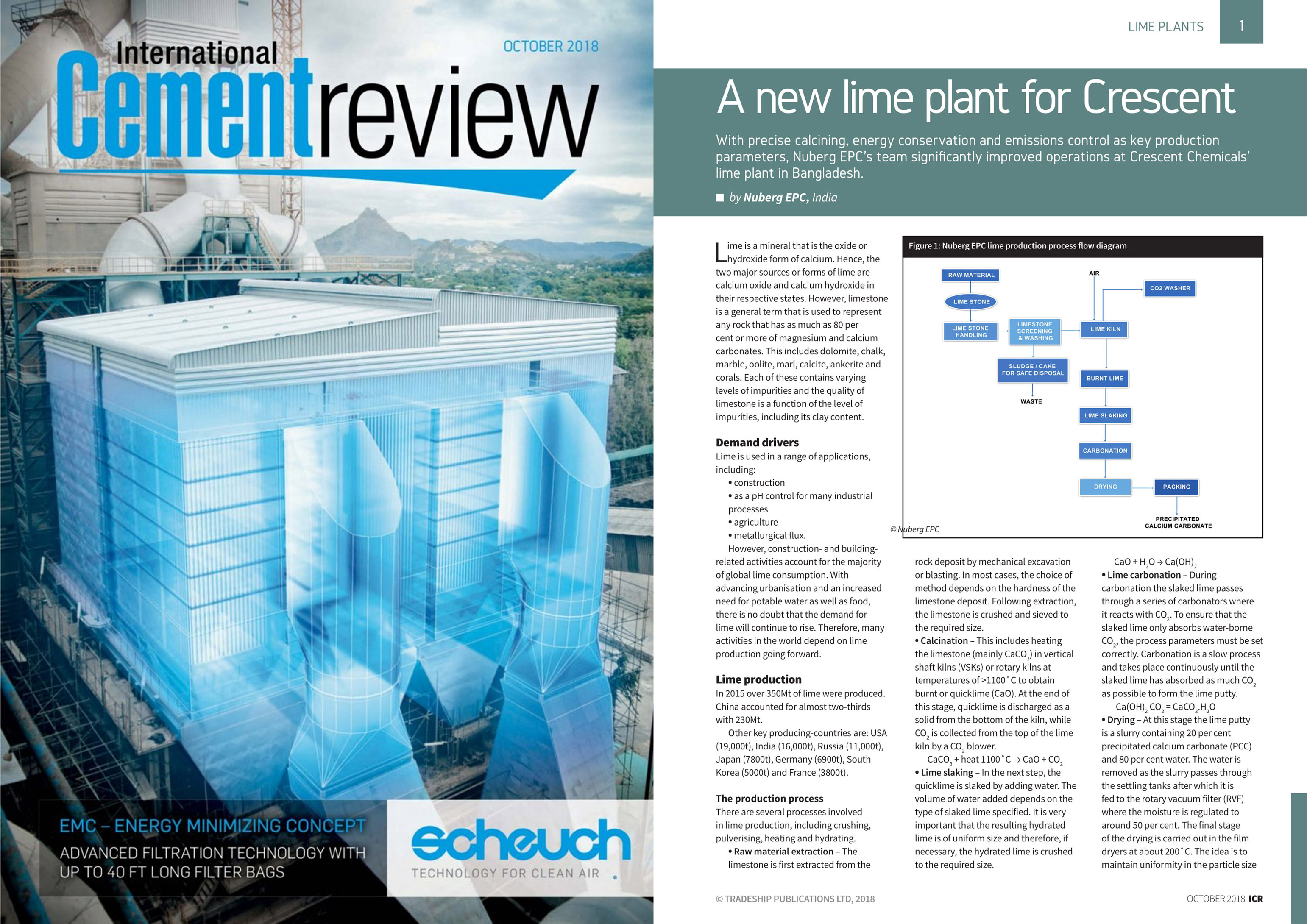International Cement Review, October 2018.
Lime is a mineral that is the oxide or hydroxide form of calcium. Hence, the two major sources or forms of lime are calcium oxide and calcium hydroxide in their respective states. However, limestone is a general term that is used to represent any rock that has as much as 80 per cent or more of magnesium and calcium carbonates. This includes dolomite, chalk, marble, oolite, marl, calcite, ankerite and corals. Each of these contains varying levels of impurities and the quality of limestone is a function of the level of impurities, including its clay content.
Demand drivers
Lime is used in a range of applications, including:
- construction
- as a pH control for many industrial processes
- agriculture
- metallurgical flux.
However, construction- and building- related activities account for the majority of global lime consumption. With advancing urbanisation and an increased need for potable water as well as food, there is no doubt that the demand for lime will continue to rise. Therefore, many activities in the world depend on lime production going forward.
The production process
There are several processes involved in lime production, including crushing, pulverising, heating and hydrating.
- Raw material extraction – The limestone is first extracted from the rock deposit by mechanical excavation or blasting. In most cases, the choice of method depends on the hardness of the limestone deposit. Following extraction, the limestone is crushed and sieved to the required size.
- Calcination – This includes heating the limestone (mainly CaCO3) in vertical shaft kilns (VSKs) or rotary kilns at temperatures of >1100˚C to obtain burnt or quicklime (CaO). At the end of this stage, quicklime is discharged as a solid from the bottom of the kiln, while CO2 is collected from the top of the lime kiln by a CO2 blower.
CaCO3 + heat 1100˚C → CaO + CO2 - Lime slaking – In the next step, the quicklime is slaked by adding water. The volume of water added depends on the type of slaked lime specified. It is very important that the resulting hydrated lime is of uniform size and therefore, if necessary, the hydrated lime is crushed to the required size.
CaO + H2O → Ca(OH)2 - Lime carbonation – During carbonation the slaked lime passes through a series of carbonators where it reacts with CO2. To ensure that the slaked lime only absorbs water-borne CO2, the process parameters must be set correctly. Carbonation is a slow process and takes place continuously until the slaked lime has absorbed as much CO2 as possible to form the lime putty.
Ca(OH)2 CO2 = CaCO3.H2O - Drying – At this stage the lime putty is a slurry containing 20 per cent precipitated calcium carbonate (PCC) and 80 per cent water. The water is removed as the slurry passes through the settling tanks after which it is fed to the rotary vacuum filter (RVF) where the moisture is regulated to around 50 per cent. The final stage of the drying is carried out in the film dryers at about 200˚C. The idea is to maintain uniformity in the particle size as well as to ensure that there is no contamination. The boiler serves as the heat source during the drying process.
Production challenges
In addition to precise calcining, energy conservation and the control of emissions such as O2, CO, CO2 and NO are key production parameters. To achieve a satisfactory performance and play its part in mitigating global climate change, the lime industry has come under increasing pressure to improve its production technologies, reducing not only energy consumption but also SO2, CO, CO2 and NO emissions. Therefore, to meet these environmental requirements, Nuberg EPC applies the latest lime production in its installations across the world.
Case study: Crescent Chemicals Ltd (CCL), Bangladesh
Gazipur-based Crescent Chemicals Ltd (CCL) aims to deliver high-quality products at competitive prices. To deliver this mission CCL contacted Nuberg EPC, who was awarded the contract for a new 60tpd lime plant as well as upgrading the programming and SCADA of the old lime plant at Karmtala (see Figure 2). The plant needed to meet PCC requirements, such as:
- assay: >98.5 per cent CaCO3
- colour: white
- solubility: completely insoluble in H2O
- moisture content: one per cent max
- pH: 10.5 max
- bulk density: 0.43-0.45g/ml
- iron: 700ppm max
- brightness ISO: 92 per cent min.
Following its brief, the Nuberg EPC team applied its expertise to the key steps of the lime plant project.
Site observation
After carrying out a thorough site inspection, Nuberg EPC discovered that the PCs as well as the software (New PC- DELL-OPTI-3050) were no longer functioning. The team procured the necessary PCs, software and carried out the installation of the new equipment. As per the client’s instruction, all the DCS panel wiring of the old lime kiln was checked and fixed where necessary. All the required SCADA and logic were updated for the subsequent expansion of the PCC.
Equipment
Major equipment installed in the plant included:
- limestone silo – a vertical limestone silo with a square top and conical bottom was installed. The new 27t silo was designed taking into account the available space and according to the following dimensions: 15m height, 2.1m conical height and 4m2 surface area.
- vibrating feeder – Nuberg EPC procured a state-of-the-art 10t vibrating feeder to transport the limestone feed over different conveyor lengths. The 1000x400m feeder operates using electromagnetism.
- VSK internals and insulation - due to the high operating temperatures, VSKs require the correct installation of internals and insulation. Therefore, Nuberg EPC supplied and installed the necessary insulation and internals using wear-resistant materials. These materials included Sprag, insulation bulk (LK) Hysil, asbestos fluff, ceramic wool and board, refractory castables, insulation bricks and SS-310 plate.
- cyclone separator - the plant’s current cyclone separator required an upgrade to maintain strict emissions compliance. As a result, Nuberg EPC procured and installed a new cyclone separator to intercept particulate matter emissions.
Additional equipment included: cable schedule, UPS drawings and manuals, burner panel drawings, CO2 washer, column circulation pump, water drain tank and manual damper./p>
Conclusion
Lime production that meets today’s strict environmental standards in terms of energy consumption and emissions requires state-of-the-art production technology. Crescent Chemicals of Bangladesh awarded the contract for the upgrade of its old lime plant and the construction of a new 60tpd lime plant at Karmtala, Gazipur, to Nuberg EPC. The India-based EPC and turnkey project management company delivered not only the required equipment but carried out the project from concept to commissioning.
After a very successful pre-commissioning, the CCL lime plant was fully commissioned and now contributes to the global lime requirement with technology that ensures precise calcining, reduced energy consumption and improved emissions control systems.
This article was first published in International Cement Review in October 2018.
Media Gallery
International Cement Review - A new lime plant for Crescent
Industrial Products Finder (IPF Online) - I see a great future for EPC companies from India
Refining & Petrochemicals - Top 30 EPC Contractors
World of Chemicals - EPC demand is rising in all dimensions of chemical industry
Financial Express - Indian firms can be world leaders in EPC
Download PDF




